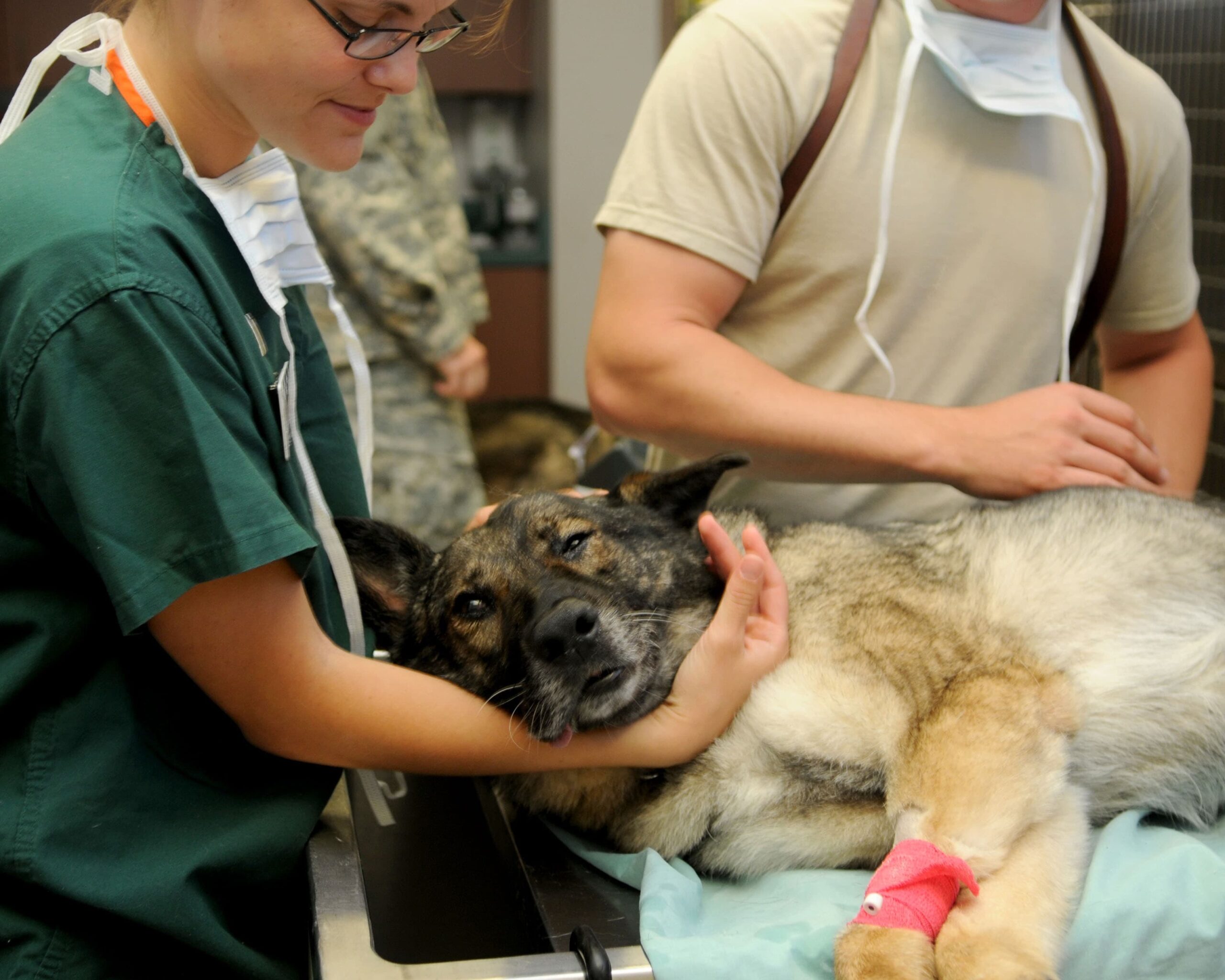Caring for Your Pet After Surgery
Published on July 11, 2011

Once your pet is out of the operating room and on his way home, it’s up to you to help him feel more comfortable, so the healing process can begin. Here, what you need to know.
When your veterinarian releases your pet from the hospital, you’ll likely receive a long list of do’s and don’ts, potential problems to look for and supplies you might need. While all of this information can be a bit overwhelming, your veterinarian and members of his staff are there to help you make it through this sometimes-difficult time.
Immediately After Surgery
Exactly how long your pet will be in the hospital depends on what type of procedure he has undergone, but if you want to see your four-legged friend, ask your veterinarian for permission. Keep in mind that the period immediately following surgery is when most complications occur, which makes it especially important to follow your veterinarian’s recommendations for rehabilitation and recovery. In some cases, doing so can mean the difference between life and death for your pet.
Before You Leave
When your pet is ready to be discharged from the hospital, you’ll be given instructions for at-home care. Make sure that you understand what is expected of you, and if you have questions, ask if you can review them with a veterinary technician. Ask your veterinarian or technician to show you the best way to lift or support your pet when it is required.
If you don’t think you’ll be able to carry out a particular part of your pet’s at-home care, ask if your veterinarian can provide any outpatient support. You’ll likely be told when to return for a follow-up examination or have sutures removed; it’s a good idea to make the appointment at this time. Also smart: Ask about your veterinarian’s procedures for after-hours help in case you do encounter a problem.
We’re Home! Now What?
Your pet may still feel the effects of anesthesia several hours after the procedure, so he may be unsteady on his feet. If that’s the case, you may want to keep him in a quiet and contained place at first. And though your pet might want to return to his or her regular routine, you need to ensure that he gets adequate rest.
Pets recovering from surgery should only be allowed outdoors to relieve themselves, but be aware that some pets may need more frequent bathroom breaks than usual, especially if they were given fluids during surgery or hospitalization. When taking your pet outdoors, make sure that he’s urinating and defecating as expected, and keep him on a leash at all times.
If your pet is receiving medication, ensure that he receives the proper doses that your veterinarian prescribed. And since certain drugs—especially painkillers—can slow his reflexes, it’s smart to restrict your pet’s activity (keeping him from stairs and slippery floors, for example) to prevent injury.
Supervise your pet’s eating and drinking, following all instructions for special nutritional requirements. Until he’s back to normal, provide food and water in small amounts.
Sometimes, veterinarians recommend “crate rest”—keeping your pet in an appropriately sized crate to restrict activity. This can be difficult for both you and your pet if they aren’t already accustomed to being in a crate. But if your veterinarian has advised you to keep your pet in a crate, it’s vitally important to do so, even if your pet is unhappy or seems to be healing. To make this trying time easier for your pet, keep him occupied with plenty of toys and an occasional low-calorie treat. You may also want to turn on a radio or television for company, or pamper him with daily grooming, which can be a welcome distraction. Also smart: Keep your pet entertained by placing the crate in a high-traffic area where he can watch the household’s activity, unless he is easily agitated (if that’s the case, it may be a better idea to keep the crate in a quiet room).
If your cat has been confined to crate rest, a large dog crate with a small litter pan inside may provide adequate containment—just be sure to cover the slippery plastic floor with an inexpensive nonslip rug.
Monitoring Surgical Sites
Some swelling is normal immediately after surgery, but watch carefully for any signs of oozing, odors, heat, pain, excessive bruising, or redness. If something doesn’t look right, call your veterinarian immediately. And don’t allow your pet to scratch or chew at the sutures or bandage. If he does, an Elizabethan collar—also known as an “e” collar—may be necessary to prevent your pet from chewing the wound.
Recovery Times
Typically, full recovery from an extensive orthopedic surgery, such as total hip replacement, takes at least 2 to 3 months, though some dogs require 6 months of careful monitoring and rehabilitation before they reach optimal recovery. Less-invasive surgeries, such as neutering or ovariohysterectomy (spaying), may require only a matter of days or weeks for recovery.
Follow Up
It’s critical to keep all recommended follow-up appointments so that your veterinarian can monitor your pet’s progress. If sutures were used, your veterinarian may need to remove them. If a cast was placed, your veterinarian will want to check it periodically and eventually remove it. Radiographs (“x-rays”) or other tests may be scheduled to assess healing.
Your veterinarian may also prescribe physical therapy, including massage and hydrotherapy, which can be helpful to your pet’s recovery.
This article has been reviewed by a Veterinarian.


